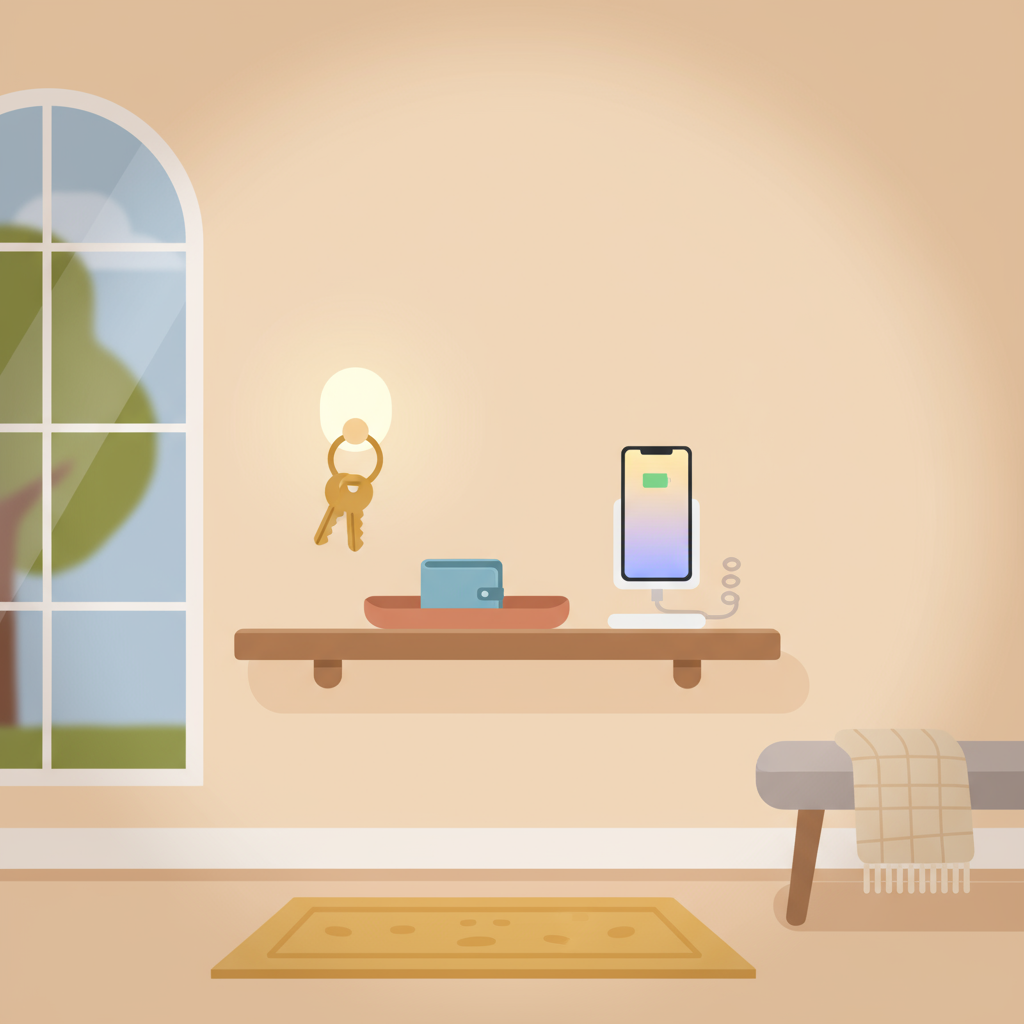Do you often find yourself scrambling to locate your keys, wallet, or phone? Losing daily belongings can be frustrating and stressful, disrupting your day and focus.
The good news is, tracking daily belongings consistently is achievable with a few simple daily habits. Building small routines can drastically reduce lost time and anxiety.
This article will guide Finders like you through three easy-to-implement daily habits that make keeping track of your things feel natural and automatic.
Your 3 Daily Habits to Track Daily Belongings Effectively
Habit 1 — Designate a Fixed Home for Each Item
Why: Consistently placing items like keys, wallets, and phones in the same spot each day makes them easier to find and builds memory through routine.
How: Choose a dedicated spot near your door or workspace for essential items. Use hooks, bowls, or trays to keep them visible and contained.
Cue: When you come home, immediately put your belongings in their designated homes before doing anything else.
Habit 2 — Perform a Quick Pocket and Space Check Before Leaving
Why: A small mental checklist before leaving any location helps prevent leaving items behind and reinforces awareness.
How: Before stepping out, say aloud or mentally list your essentials, such as “keys, wallet, phone,” while touching their spots or your pockets.
Cue: Develop the routine to pause at doorways or exiting spots to run this quick check.
Habit 3 — Declutter Regularly and Use Visual Anchors
Why: A tidy environment with clear, visible places for belongings reduces the chances they’ll get buried or misplaced.
How: Spend a few minutes weekly clearing clutter near your designated spots and use bright holders or distinctive containers to make items stand out.
Cue: Schedule a specific day or time each week to refresh your space and assess your setup.
Week 1 Schedule
| Day | Task |
|---|---|
| Monday | Set up fixed homes for keys, wallet, phone near your main exit. |
| Tuesday | Practice the pocket and space check before leaving every location. |
| Wednesday | Spend 10 minutes decluttering your key areas and add bright visual anchors. |
| Thursday | Repeat all habits and note any changes or difficulties. |
| Friday | Adjust your designated homes if needed for easier access and visibility. |
| Saturday | Perform your weekly declutter and refresh routine. |
| Sunday | Review your progress and set intentions for the coming week. |
Troubleshooting
Barrier: Forgetting to put items in their designated homes.
Fix: Tie the habit to an existing routine, like hanging your coat or taking off shoes, to serve as natural reminders for placement.
Barrier: Clutter building up around your designated spaces, hiding items.
Fix: Schedule brief weekly decluttering sessions to maintain clear and visible areas for your belongings.
Barrier: Items being moved by others or used in other locations.
Fix: Communicate your system to family or roommates and establish shared responsibility for keeping spaces orderly.
FAQs
Q: How quickly can these daily habits reduce lost items?
A: Many people notice fewer lost items within just one or two weeks of consistently using these habits to track daily belongings.
Q: What if I forget to do a pocket check before leaving?
A: That’s normal at first. Reinforce the habit by pairing it with other exit routines, like grabbing your bag or turning off lights.
Q: Can technology help with tracking belongings?
A: Yes! Bluetooth trackers add an extra layer of security but work best when combined with fixed homes and regular habits.
Tracking & Motivation Tips
Keep a small checklist on your phone or by your door to remind you to track daily belongings. Celebrate small wins when you don’t lose an item all day. Gradually, these actions become second nature, saving you time and stress.
Key Takeaways to Help You Track Daily Belongings Successfully
To track daily belongings effectively, establish fixed homes for your essentials, perform quick checks before leaving places, and maintain clutter-free visible spaces. These simple daily habits work together to build consistency and reduce lost items, making your day smoother and less stressful.




